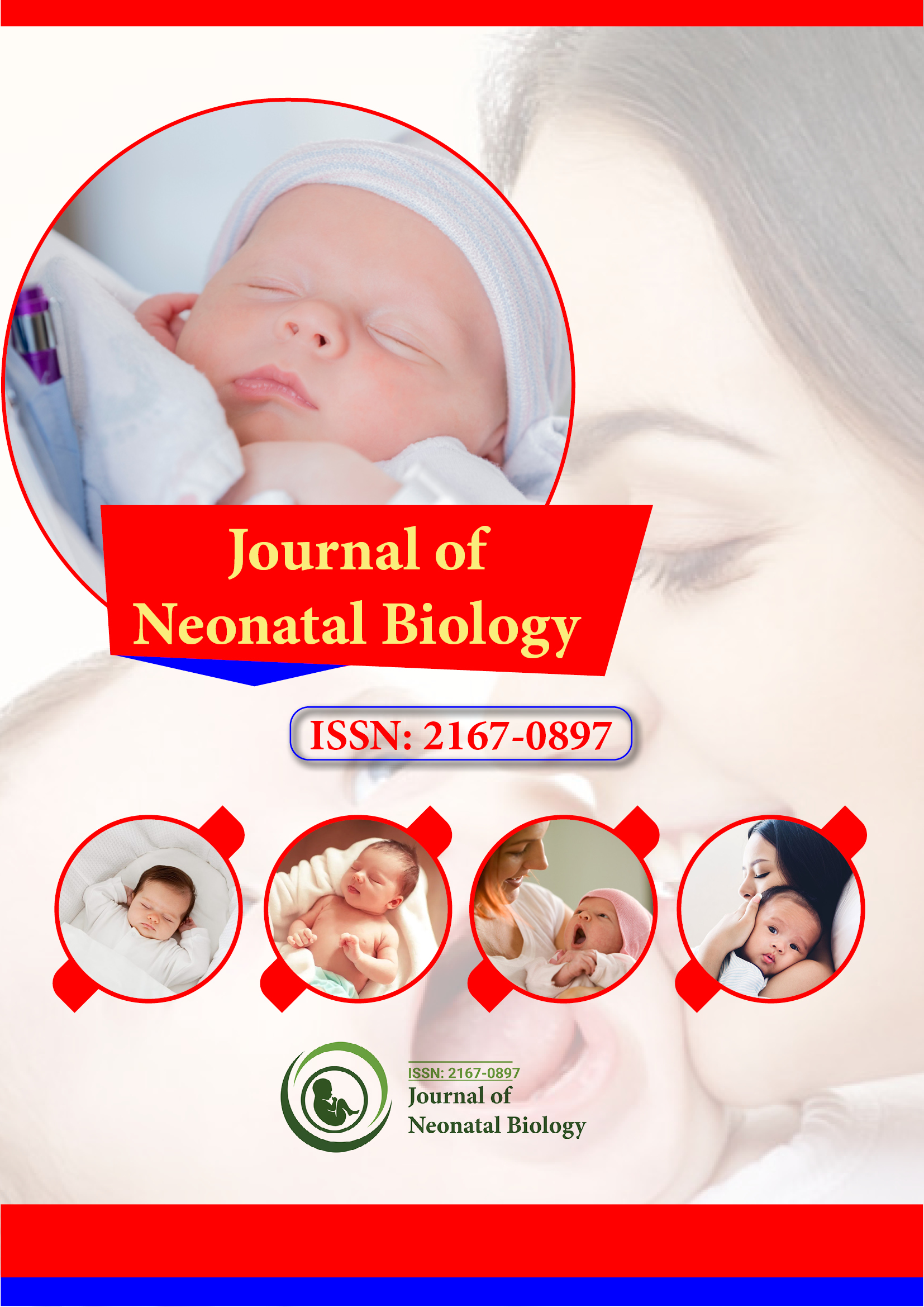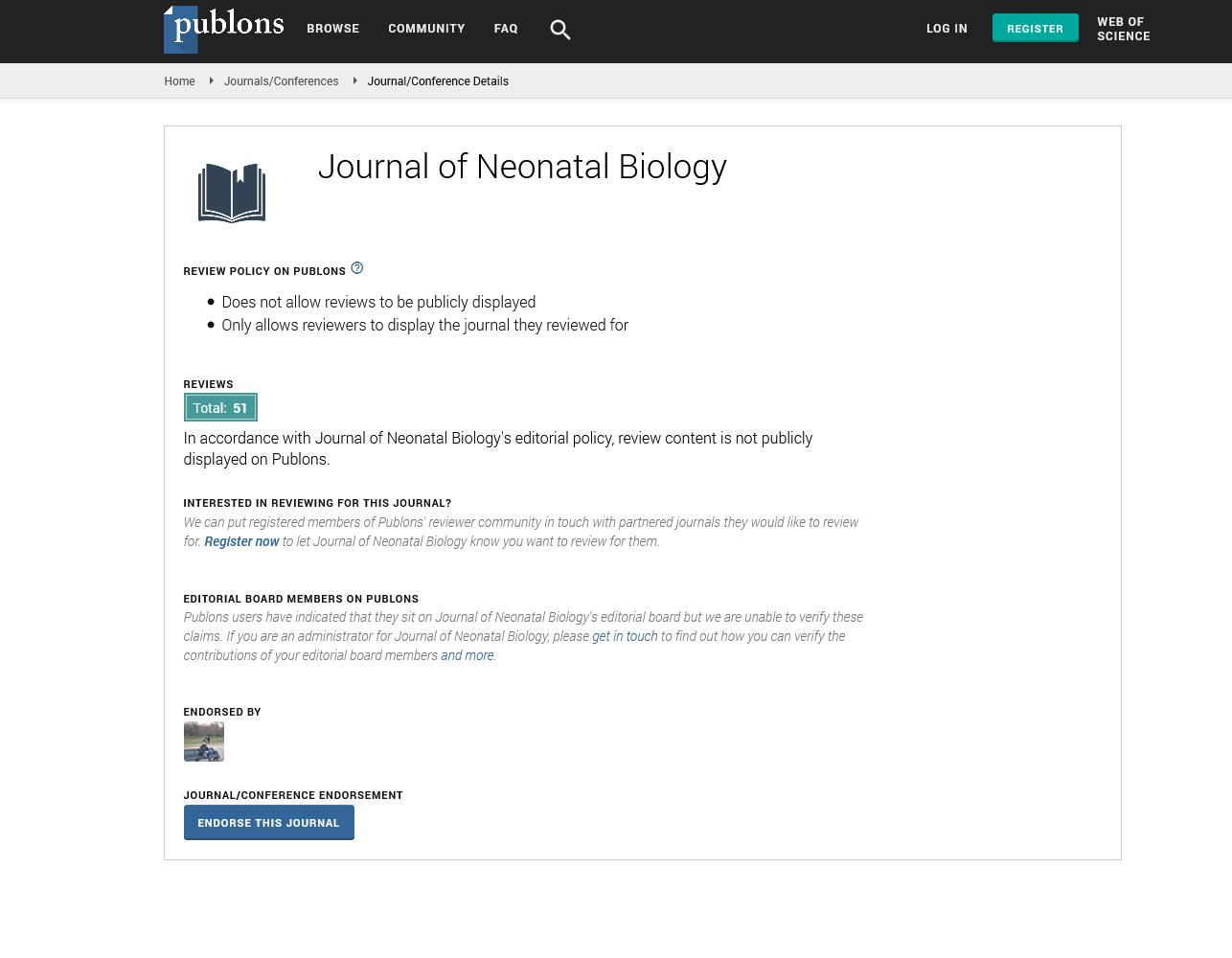PMC/PubMed Indexed Articles
Indexed In
- Genamics JournalSeek
- RefSeek
- Hamdard University
- EBSCO A-Z
- OCLC- WorldCat
- Publons
- Geneva Foundation for Medical Education and Research
- Euro Pub
- Google Scholar
Useful Links
Share This Page
Journal Flyer

Open Access Journals
- Agri and Aquaculture
- Biochemistry
- Bioinformatics & Systems Biology
- Business & Management
- Chemistry
- Clinical Sciences
- Engineering
- Food & Nutrition
- General Science
- Genetics & Molecular Biology
- Immunology & Microbiology
- Medical Sciences
- Neuroscience & Psychology
- Nursing & Health Care
- Pharmaceutical Sciences
The potential effect of breastfeeding on maternal sensitivity during the first year of life
20th International Conference on Neonatology and Perinatology
December 04-06, 2017 | Madrid, Spain
Sawsan Abuhammad
Jordan University of Science and Technology, Jordan
Scientific Tracks Abstracts: J Neonatal Biol
Abstract:
Background: Poor maternal sensitivity leads to insecure infant attachment, which has been associated with negative consequences in cognitive and mental health in school-aged children that continue into adulthood. Maternal sensitivity is defined as the mother‚??s ability to recognize and respond to her infant‚??s cues consistently and appropriately; it is indicative of the interactions between mothers and their infants, which is characterized by mutual and concurrent interchanges, often referred to as the ‚??mother-infant dance‚?Ě If the mother is able to accurately recognize her infant‚??s cues, then she can provide an appropriate and secure foundation to encourage the infant‚??s exploration, watching over and protecting the infant when necessary Literature suggests that maternal sensitivity is enhanced for women with high levels of oxytocin. Oxytocin is naturally increased during the early postpartum period, as a result of breastfeeding. Purpose: The hypotheses tested in this study were as follows: (a) Mothers who breastfeed their infants between two to 12months after birth will demonstrate greater sensitivity than mothers who only formula-feed their infants, as measured by MAI. (b) Working mothers have greater maternal sensitivity than nonworking mothers in Jordan.(c) A difference in maternal sensitivity levels using MAI measure will be observed between mothers who never breastfed their infants and those who breastfed their infants for two to 12months of age, while controlling for infant temperament. Study Design: Cross-sectional survey descriptive design was employed. All study protocols were reviewed and approved by the university Institutional Review Boards from UWM University. Participants: Participants included 258 Arabic speaking mothers who visited three health care centers in Irbid, Jordan. Data Collection: A combination of strategies was used in recruiting participants for the study. Data were collected from participants on (a) Maternal Sensitivity (B) Infant Temperament (C) Sociodemographical Information (D) Antenatal Information. Generally, the survey questionnaire was distributed and self-administered to mothers at various times in the health centers. Women also took the survey with them to their home, completed the survey and dropped them in the box in the health care centers. Analysis: The data was analyzed using the statistical package for the social sciences (SPSS, version 24). Results: Participants ranged in ages (18yrs-40 years; mean = 20.8 SD = 2.20 years. Women were recruited from all educational levels. Participants were predominantly reported being married (99%).There were varying perspectives held by the mothers in the study related to their maternal sensitivity toward their infants. The following findings demonstrated the following: a one-way analysis of variance (ANOVA) revealed significant differences in maternal sensitivity between breastfeeding and formula feeding mothers at two months (F=24.365, P=0.00); (b) Crosstab techniques were used to determine the contribution of the mother‚??s employment status on breastfeeding her infant. The probability of obtaining this chi-square statistic, 2.58, show there is no effect from the independent variables (employment status), on the dependent variable (choosing breastfeeding). The model is not statistically significant because the P-value (0.095) is more than 0.05; (c) there was a statistically significant difference in maternal sensitivity between the breastfeeding and formula feeding group (F=24.358, p <.05) when using analysis of covariance to statistically control for infant temperament status, and holding temperament constant. The partial Eta squared of the groups indicates the effect was large (.101). At 12 months, there was a statically significant difference in maternal sensitivity between the breastfeeding and formula feeding group (F=3.98, p>0.05) when holding temperament constant. Conclusion: Identifying maternal sensitivity level for breastfeeding mothers towards their infants is an appropriate initial first step to developing appropriate educational programs to help train future nurses to work sensitively and appropriately with their patient from mother and infant patients. A case study approach that uses stories from those mothers could be used to help provide better perspectives of understanding maternal sensitivity

